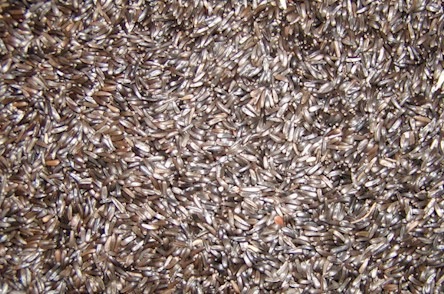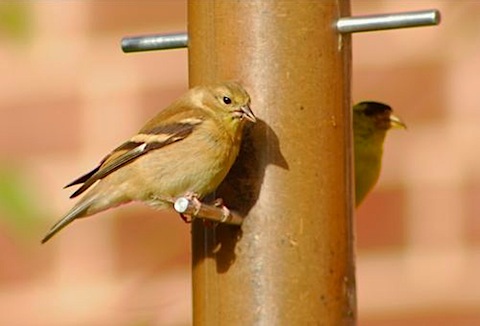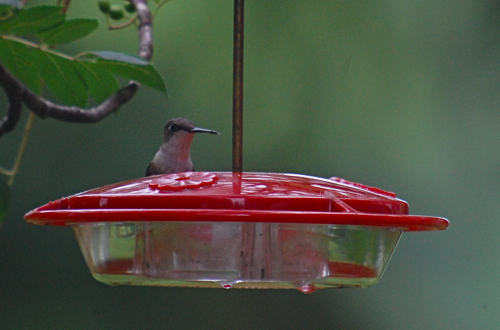 Non Birding Bill and I headed out to my favorite birding spot--Mr. Neil's yard for some hang out time and a bee check. Since my travel schedule gets insane in spring Hans has taken over keeping the feeders full as he's taking care of the yard. He does a great job, but sometimes the nectar and oriole feeders empty too fast for him to keep up. When I was walking around the feeders, a ruby-throated hummingbird flew up to my head, buzzed around then flew away. I went to the nectar feeder (we use the HummZinger)--empty. I made some nectar and less then a minute from stepping away a hummingbird flew down. I love how hummingbirds figure out how to get our attention when a food source is depleted. I've known hummingbirds to flutter in front of windows when a feeder is empty too. Heck, Lorraine said they had a hummer in the house last week...maybe the feeder was empty then?
Non Birding Bill and I headed out to my favorite birding spot--Mr. Neil's yard for some hang out time and a bee check. Since my travel schedule gets insane in spring Hans has taken over keeping the feeders full as he's taking care of the yard. He does a great job, but sometimes the nectar and oriole feeders empty too fast for him to keep up. When I was walking around the feeders, a ruby-throated hummingbird flew up to my head, buzzed around then flew away. I went to the nectar feeder (we use the HummZinger)--empty. I made some nectar and less then a minute from stepping away a hummingbird flew down. I love how hummingbirds figure out how to get our attention when a food source is depleted. I've known hummingbirds to flutter in front of windows when a feeder is empty too. Heck, Lorraine said they had a hummer in the house last week...maybe the feeder was empty then?
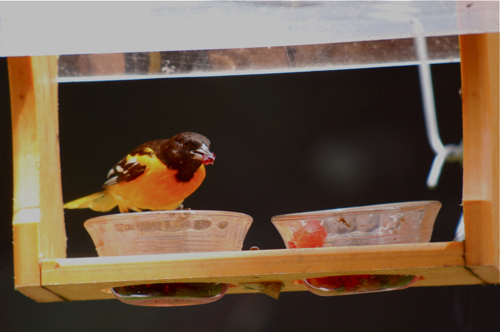
Mr. Neil's cherry tree is bursting with cherries once again and unlike last year, NBB and I managed to get out and pick some cherries before the birds raided the tart fruit. I noticed the orioles were going for the fruit and I refilled our grape jelly feeder. Orioles tend to ignore the jelly feeder in June when bugs were out, but I figured if they were eating cherries, they would eat grape jelly. I filled one cup with jelly and the other cup with cherries from the tree. As soon as I put the feeder out, the oriole went from the cherries down to our feeder...and totally ignored the cherry dish and went right for the grape jelly. The best part was that he flew off and a few moments later returned with a female.
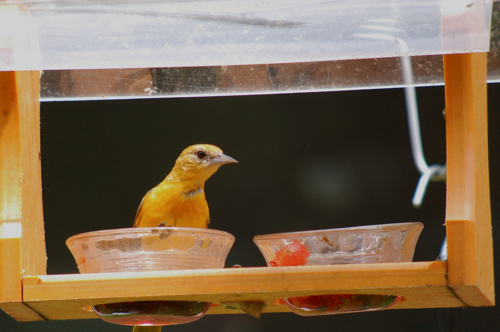
She also chose the grape jelly over the cherries. That's fine, more cherries for us! I was glad to see the orioles, I've been so preoccupied with surveys and work that I did not get a chance to really enjoy orioles at the feeder in May. Incidentally, we took our portion of the cherries (still leaving an ample supply for the birds on the upper parts of the cherry tree) and made a tart cherry crumble. Many people know Mr. Neil for his writing and general Neilness but he has mad skillz in the kitchen, I've learned some of my best cooking from him.

